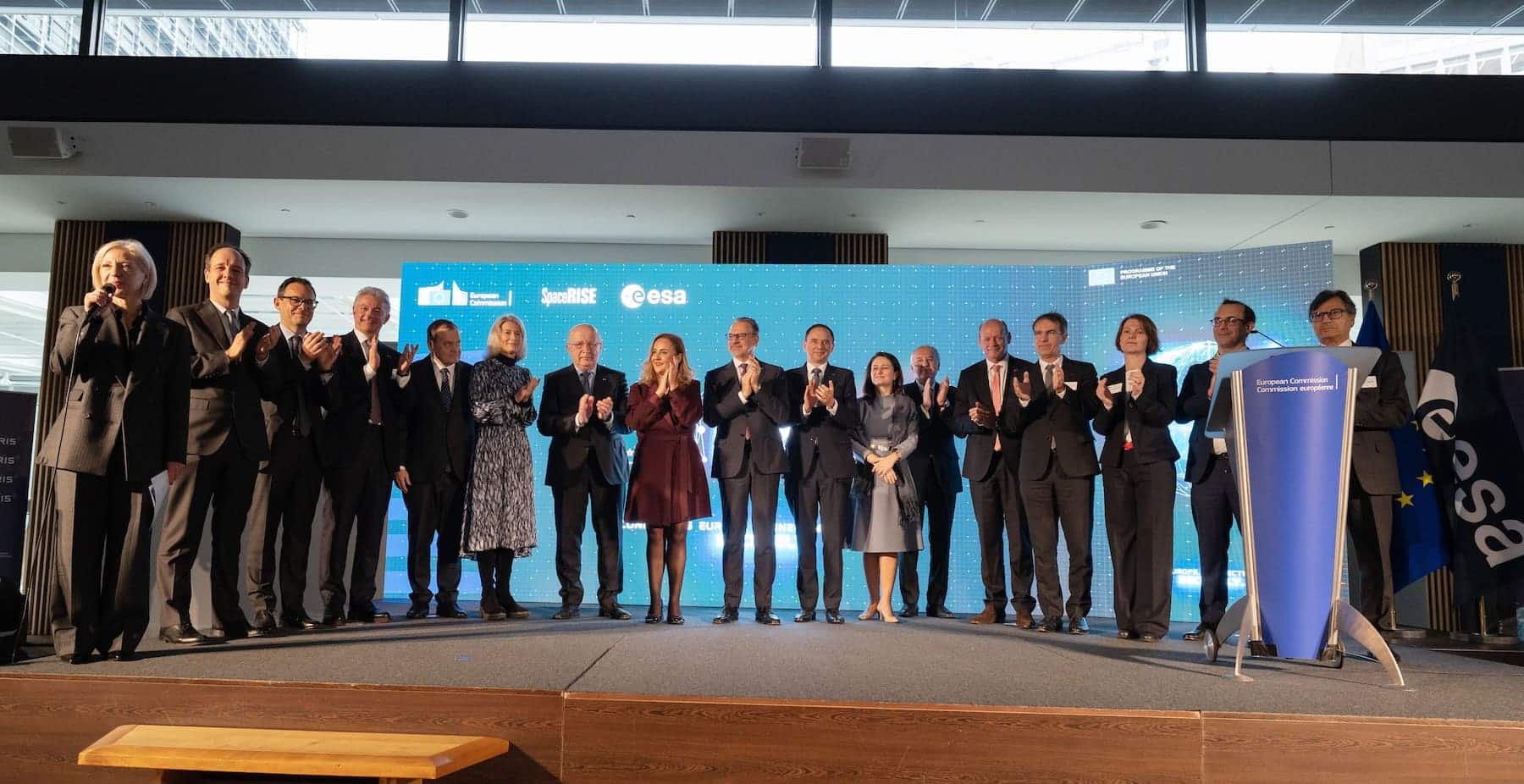The European Union (EU) has taken a significant step towards digital sovereignty and technological resilience with the confirmation of two important contracts that will bring IRIS² to life, a constellation of satellites that will ensure secure, fast, and efficient communications for governments, businesses, and European citizens alike. This multi-orbit system will comprise approximately 300 satellites, distributed across low and medium Earth orbits, and its development is backed by an industrial consortium led by SES, Eutelsat, and Hispasat.
A strategic system for European autonomy
IRIS², which stands for “Infrastructure for Resilience, Interconnectivity, and Security by Satellite”, is designed to provide secure and uninterrupted connectivity at the governmental level and to offer advanced commercial services. This new system will become a strategic asset for Europe, consolidating itself as the EU’s third flagship program in the space domain, alongside Copernicus (Earth observation) and Galileo (satellite navigation).
The IRIS² constellation will be launched using European rockets and is designed to operate with an interconnected architecture that will eliminate the need for thousands of satellites, enhancing both efficiency and security. Additionally, an extra layer of services will be developed in low Earth orbit to extend its reach.
A collaborative, multimillion-euro project
The IRIS² program has a total investment of €10.6 billion, funded as follows:
- €6 billion contributed by the European Union.
- €550 million provided by the European Space Agency (ESA).
- More than €4 billion from the private sector.
The contract between the European Commission and the SpaceRISE consortium (composed of SES, Eutelsat, and Hispasat) has a duration of 12 years. The ESA, with its extensive experience in space programs, will play a key role in overseeing the development and validation of the system, ensuring its success.
According to Josef Aschbacher, Director General of ESA, “In a geopolitically complex world, ensuring secure and resilient government communications is crucial. The ESA will bring its technical excellence to foster innovation in the European space industry and strengthen the continent’s competitiveness.”
Industrial leadership and European cooperation
The IRIS² project will involve satellite manufacturers, small and medium enterprises, as well as other key players in the European space industry. The implementation of the system will not only enhance the continent’s technological autonomy but will also drive innovation, job creation, and competitiveness in the global market.
Adel Al-Saleh, CEO of SES, stated that “IRIS² is an integral part of the European space strategy and represents an effective model of collaboration between the public and private sectors.” Meanwhile, Eva Berneke, CEO of Eutelsat, emphasized that “the program is a historic initiative that reflects Europe’s commitment to digital sovereignty and sustainable connectivity.”
First launch in 2029
The first launch of IRIS² satellites is expected to take place in 2029, marking the beginning of a new era in European spatial connectivity. The system will enable the EU to offer high-quality communication services to meet the needs of its governments, businesses, and citizens, while also contributing to bridging the digital divide in remote areas of the continent.
A connected and secure future
With the launch of IRIS², Europe will not only ensure secure and resilient communications but will also strengthen its position as a leader in the global space industry. This project becomes a symbol of technological advancement, transnational collaboration, and Europe’s commitment to a more connected, innovative, and autonomous future.
IRIS² represents a milestone in European space history, ensuring that the continent is prepared for the challenges of tomorrow while strengthening its responsiveness in an increasingly complex geopolitical landscape.
Source: ESA.int

